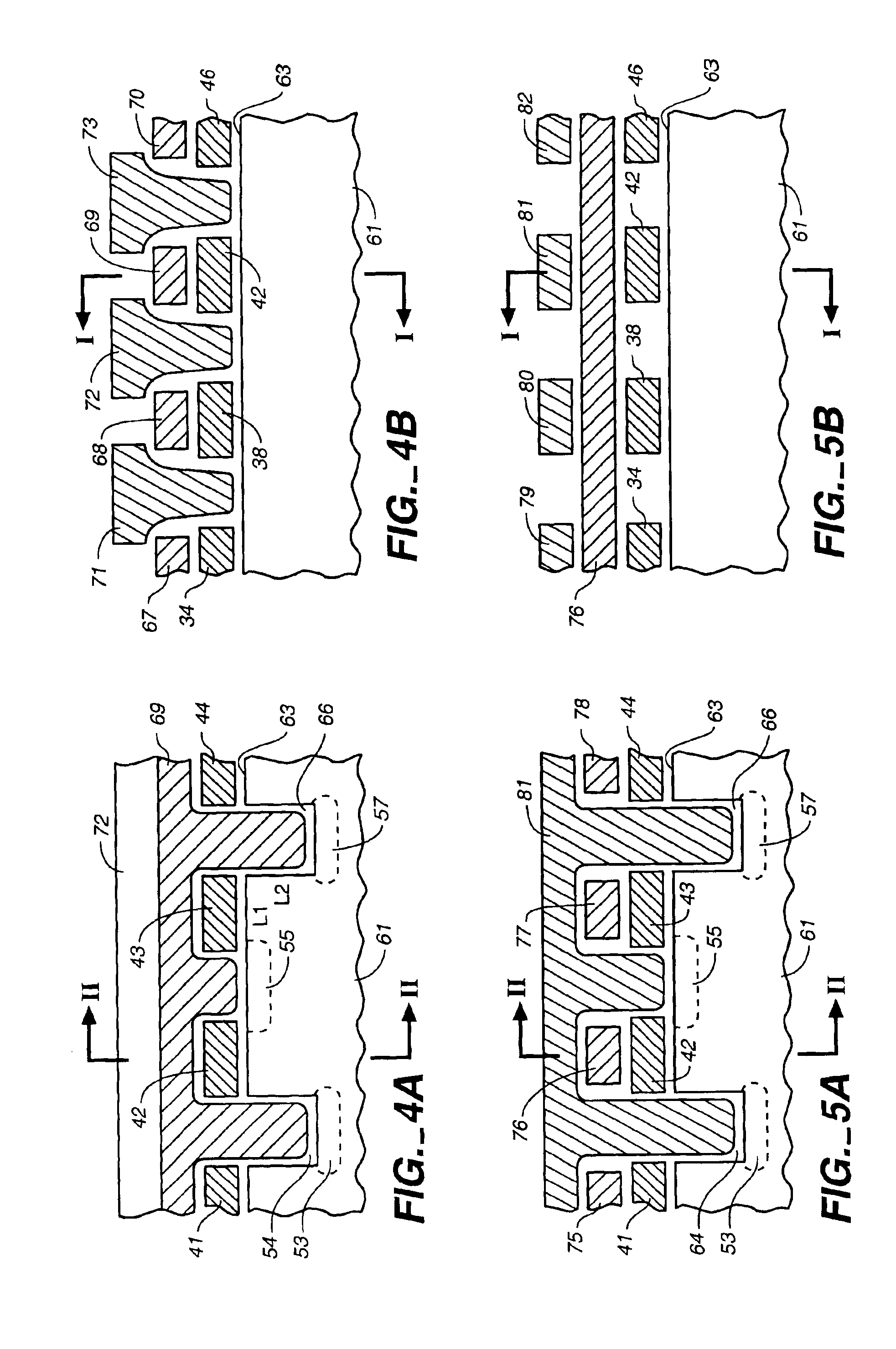Non-volatile memory cells utilizing substrate trenches
a substrate trench and memory cell technology, applied in the direction of electrical equipment, semiconductor devices, instruments, etc., can solve the problems of limiting the size of a given circuit layout, and the difficulty of performing both of these functions, so as to reduce improve performance, and reduce the effect of the size of individual memory cells
- Summary
- Abstract
- Description
- Claims
- Application Information
AI Technical Summary
Benefits of technology
Problems solved by technology
Method used
Image
Examples
first specific embodiment
of the Memory Cells and Array
[0038]In the embodiment shown by the orthogonal cross-sectional views of FIGS. 4A and 4B, alternate diffusions are positioned across the substrate in the x-direction in the bottom of trenches in the substrate, and the remaining diffusions are formed on the substrate surface. The trenches are elongated in the y-direction and spaced apart in the x-direction. The diffusions 53 and 57, for example, are in the bottom of respective trenches 64 and 66 in the substrate 61, while the diffusion 55 is formed in the substrate surface 63. Word lines 67-70 are elongated with their lengths extending in the x-direction across the substrate over a row of floating gates, while being spaced apart in the y-direction. The word lines include select gates extending down into the trenches, as shown in FIG. 4A for the word line 69 with select gates in the trenches 64 and 66. A thin dielectric between the walls of a trench and the select gate therein provides capacitive coupling ...
second specific embodiment
of the Memory Cells and Array
[0042]The orthogonal cross-sectional views of FIGS. 5A and 5B show a second embodiment that has the same structure of floating gates, trenches and diffusions as the first embodiment but the gates formed from the second and third polysilicon layers are different. The second polysilicon layer is formed into steering gates 75-78 that are elongated in the y-direction and spaced apart across the substrate 61 in the x-direction. Each steering gate extends across a column of floating gates with which it is capacitively coupled, so that a portion of the voltage on a steering gate is coupled with the floating gates under it.
[0043]Word lines 79-82 are formed from the third polysilicon layer. As can be seen from FIG. 5A, select transistor gates extend downward from the word line 81 into the trenches 64 and 66. As with the first embodiment, the select gates are capacitively coupled with both sides of the trenches that are opposite to each other in the x-direction. T...
third specific embodiment
of the Memory Cells and Array
[0045]A cell array using a different trench structure than in the first and second embodiments is illustrated by the orthogonal sectional views of FIGS. 6A and 6B. In this third embodiment, trenches are provided between each column of floating gates. Trenches 103, 104 and 105 of FIG. 6A have widths that extend completely between, or almost completely between, adjacent columns of floating gates that include respective floating gates 41-44. Source and drain diffusions 53, 55 and 57 of this embodiment are formed in the bottom and up one side of respective trenches 103, 104 and 105, the sides all facing in the same direction. The select gate channel L2 of a cell is on a wall of each trench that is opposite to the wall containing the diffusion. The floating gates 41-44 remain on the substrate surface 63 and extend between trenches on either side of them in the x-direction. The sidewall portion of the diffusions extend up to the substrate surface 63 and are in...
PUM
 Login to View More
Login to View More Abstract
Description
Claims
Application Information
 Login to View More
Login to View More - R&D
- Intellectual Property
- Life Sciences
- Materials
- Tech Scout
- Unparalleled Data Quality
- Higher Quality Content
- 60% Fewer Hallucinations
Browse by: Latest US Patents, China's latest patents, Technical Efficacy Thesaurus, Application Domain, Technology Topic, Popular Technical Reports.
© 2025 PatSnap. All rights reserved.Legal|Privacy policy|Modern Slavery Act Transparency Statement|Sitemap|About US| Contact US: help@patsnap.com



